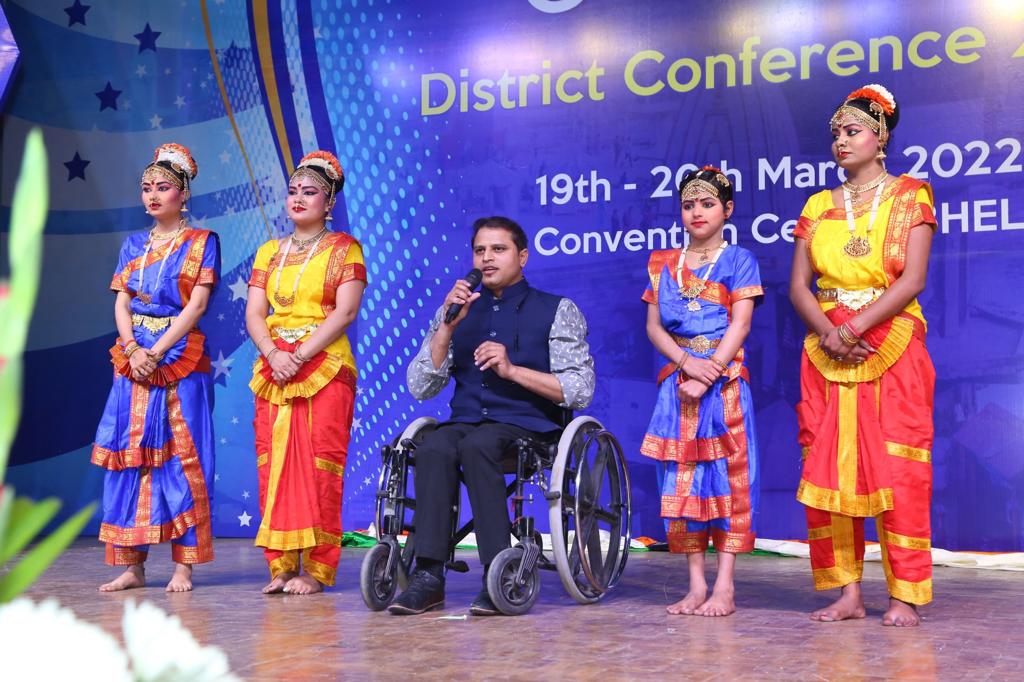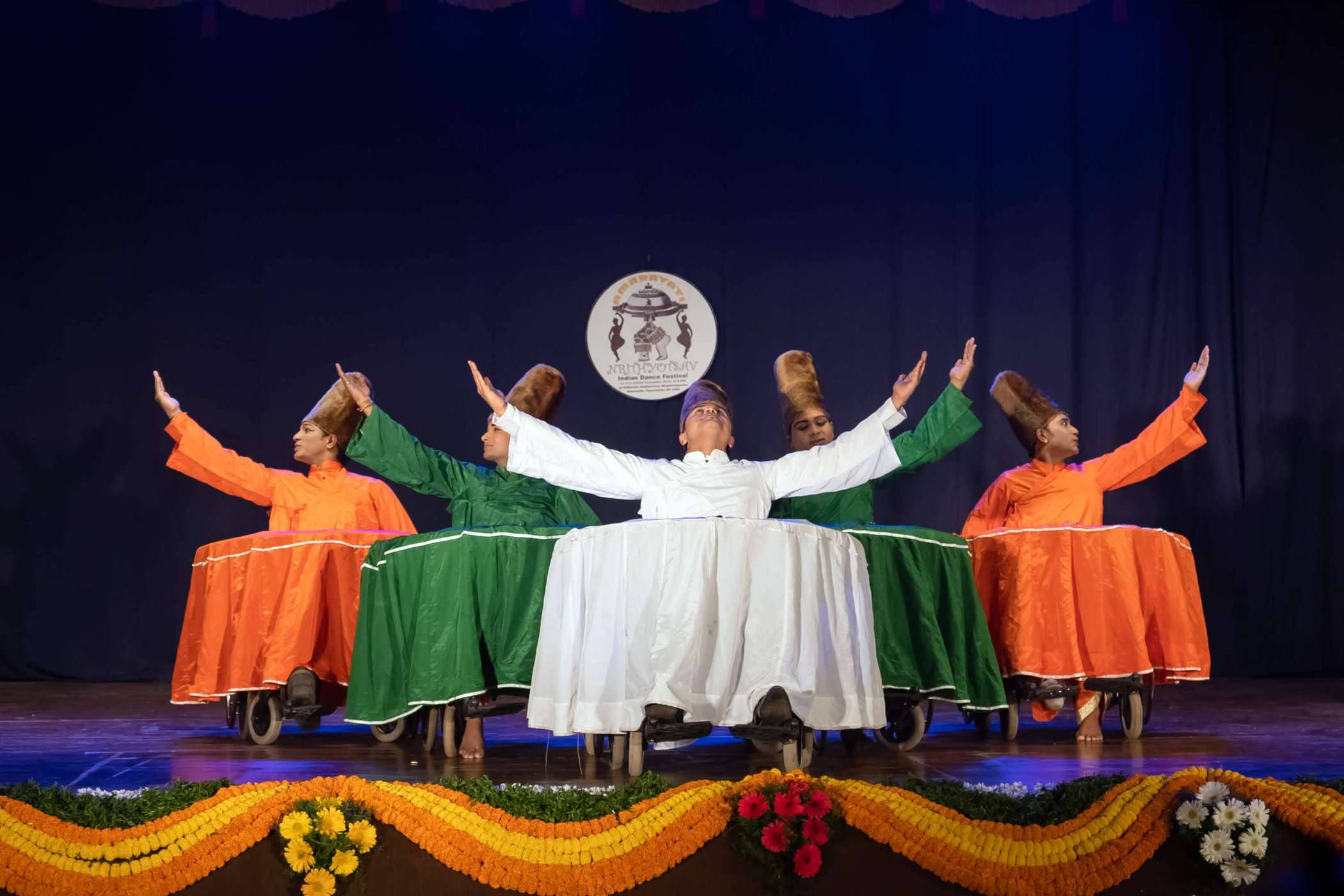‘I’m a Bharatanatyam Artist on Wheelchair; Here’s Why I Started a Dance Academy’
Husnain started We Are One dance academy in 2016 that teaches Salsa, Bharatanatyam and more to over 90 persons with disabilities.

Husnain is a trained Bharatanatyam dancer who resides in the National Capital. He along with eight other dancers runs a dance academy called ‘We Are One.’ Established in 2016, this academy today trains over 90 students, the youngest of whom is eight and the oldest student is 65.
The one fact that distinguishes him and his teachers from all the other dance academies is that they are all Persons with a Disability (PwD). While some, like Husnain, are wheelchair-bound, others have speech and hearing impairments. However, what connects them all is their passion to learn and perform.
“Even though I have been performing for several years now, the respect and recognition are nowhere close to what I deserve,” says the 30-year-old speaking to The Better India.
Dignity, empowerment, inclusion & equality

“Six years ago, in 2016, when we launched We Are One, it was with the sole objective of achieving dignity, feeling empowered and included and being treated as equals than as PwDs,” he says. To promote disability in the field of performing arts, especially dancing, was of prime importance to him.
A bout of very high fever when he was under a year old left him in a wheelchair. He shares, “Unfortunately, there was no access to good medical facilities where I lived and the fever spiked to a level that left me with polio. Waist down, I was affected by polio.” It was at Amar Jyoti Charitable Trust, the school where Husnain studied, that dance came into his life.
“This school admitted PwD children as well and I was enrolled here in 1995. I spent my early years, from nursery until Class 8 in this school. In 2003, when I was 12 years, I got the opportunity to perform in a group at Delhi’s Talkatora stadium. That, for me, was an awakening of sorts,” he says. Even though at this event he was one amongst 150 other performers, he says that being on stage made him come alive.
Asked why he chose dance as a medium of expression, he laughs and says, “I am often asked this and say the same thing. Why is Shahrukh Khan an actor and not something else? He was born to be an actor and in the same way, I was born to dance and perform. Nothing gives me more happiness than being on stage.”
‘I have performed in over 1,500 shows in eight countries.’

Despite all the performances, Husnain says that even now when he approaches people on behalf of his group, they wonder what a performance in a wheelchair will look like. He says, “Questions like what can we do, what will we do and how will we do all that sitting on a wheelchair always perplexes the audience. They come to our shows more out of curiosity than the appreciation of the dance.”
“However,” he continues, “All it takes is a minute of the performance for them to be hooked to us on stage. While they begin watching the show with sympathy for us, PwD performers, by the end of the show, there is nothing but sheer appreciation for the show. They realise what all we are capable of.”
He keeps reiterating that what his community members need is an opportunity and not mercy. As a group, the members are part of not just Bharatanatyam performances but also dabble in Salsa, Manipuri martial arts dance form and even yoga on wheels. “We also hold the distinction of being India’s first wheelchair group to perform Salsa,” he adds with pride.
A day in the life of the performers starts with a session at the gym, where each performer works on strengthening their upper body. This is followed by dance rehearsals, meetings to conceptualise new themes for the shows and discussions on stage, costumes and makeup. “On most days, we are either teaching others or are practising for our upcoming shows. So, we dance every day,” he adds.
‘I am a Muslim performing Bharatanatyam.’

The journey thus far has not been easy. As a Muslim, Husnain says that his family members never understood why he would want to learn and perform Bharatanatyam. It was not something that they encouraged. “When I started it was never to break any glass ceiling or pave the way for others. I did it because of the joy it brought to me,” he shares.
While today there is respect for the art form that he and his fellow members perform, he says that there were so many instances when he would be called langda (a lame person) and apaahij (derogatory term for PwD). “These would hurt. It made me feel awkward and would lead me to feel so disillusioned about what I was trying to do,” he says. He remembers his father’s words to not let anyone else determine one’s self-worth and says that kept him going.
With every big and small performance came appreciation. There were news clippings about the troupe and every time his parents read them, they felt a little proud.
“When my father started being recognised as ‘Husnain’s father’, he started walking with his chest slightly broader,” he says with a smile.

Gulshan Kumar, a fellow wheelchair-bound artist who has been associated with Husnain for over a decade says, “Dance has given me a kind of freedom that I cannot even begin to explain. As a member of We Are One, the pride I feel at being able to train so many others keen on learning dance is amazing. We have forced people to look beyond our disability.”
The journey for Husnain and his fellow trainers has been one fraught with difficulties.

From missing their trains to having to travel by multiple means to get to their performance destination to not being taken seriously and paid on time, these are just some of the woes that he shares. However, he adds, “When we see our audience stand up and clap for us, we seem to forget all the hardships we go through. The language of dance is just so powerful.”
His dream is to open We Are One centres in as many cities as possible. In conclusion, he says, “The more children who come and join us the more joy we can spread.”
If you would like to reach out to Husnain you can check out their website here.
(Edited by Yoshita Rao)
If you found our stories insightful, informative, or even just enjoyable, we invite you to consider making a voluntary payment to support the work we do at The Better India. Your contribution helps us continue producing quality content that educates, inspires, and drives positive change.
Choose one of the payment options below for your contribution-
By paying for the stories you value, you directly contribute to sustaining our efforts focused on making a difference in the world. Together, let’s ensure that impactful stories continue to be told and shared, enriching lives and communities alike.
Thank you for your support. Here are some frequently asked questions you might find helpful to know why you are contributing?


This story made me
-
97
-
121
-
89
-
167













